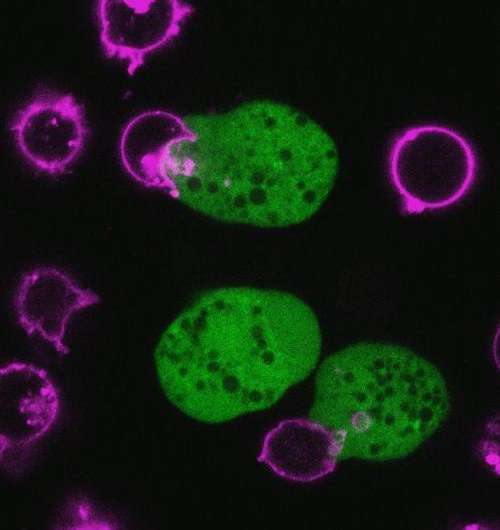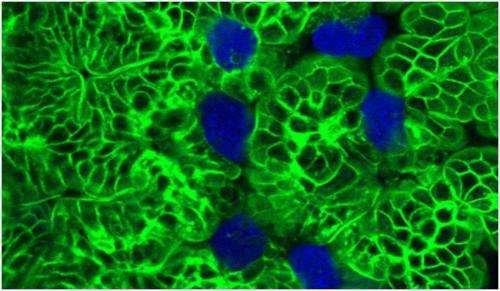Amoeba study puts bite on dysentery

An amoeba parasite that causes potentially fatal dysentery in poor countries wreaks its havoc by eating intestinal cells alive, scientists reported on Wednesday.
Called Entamoeba histolytica, the parasite destroys cells lining the colon, causing ulcers and abscesses and sometimes spreading in the blood to the liver and other organs.
But how it does this has been unclear, until now.
A common presumption was that the amoeba injects a toxic cocktail into the cells to kill them and then gobbles them down.
A team led by William Petri of the University of Virginia at Charlottesville caught amoebae in the act in a feat of live microscopy.
The parasite takes single bites out of living cells until the damage is such that the cell eventually dies, they found.
The amoeba then detaches, spits out non-digested chunks of cell, and heads to the next meal.
The process is called trogocytosis, from the Greek word meaning "to nibble."
This is the first time a parasite has been seen doing this in human cells.
Amoebic dysentery, also called amoebiasis, is handed on in faecally-contaminated food and water or through person-to-person contact.

Its hallmarks are violent diarrhoea, often with traces of blood, abdominal pain and flatulence. There is no vaccine, but the condition can be treated with an antibiotic called metronidazole, marketed as Flagyl.
Understanding how E. histolytica devours intestinal cells suggests intriguing new paths for drugs to block it, according to the study published in the journal Nature.
"Amoebic trogocytosis is a potentially promising target for the future of new therapeutics for amoebiasis, a major neglected disease in the developing world," it said.
More information: Trogocytosis by Entamoeba histolytica contributes to cell killing and tissue invasion, Nature (2014) DOI: 10.1038/nature13242
Journal information: Nature
© 2014 AFP


















